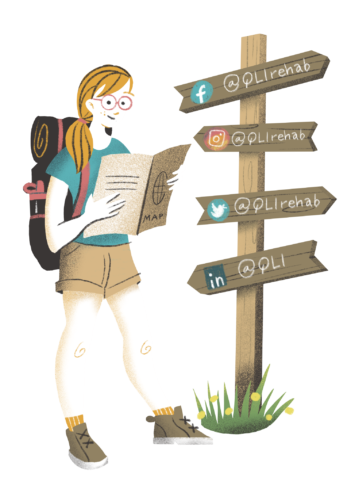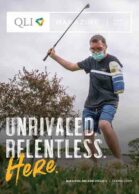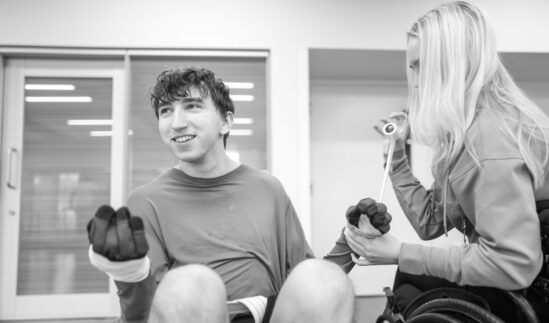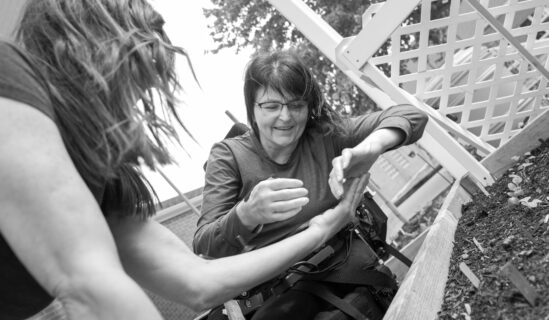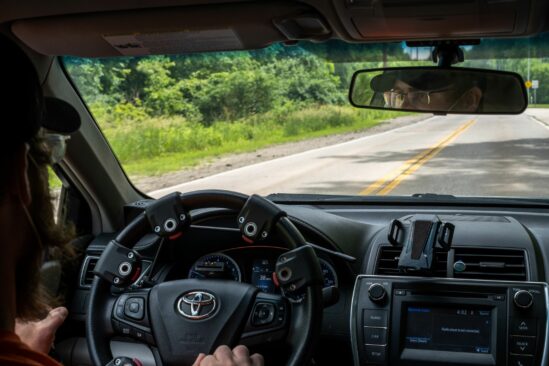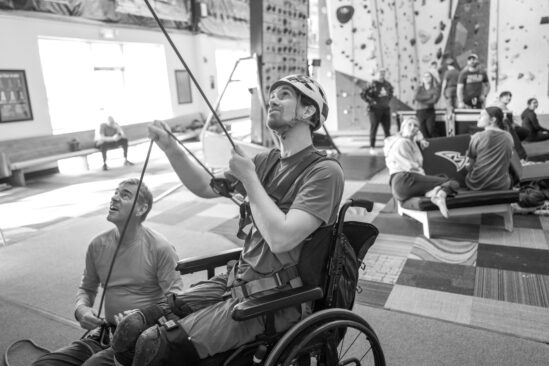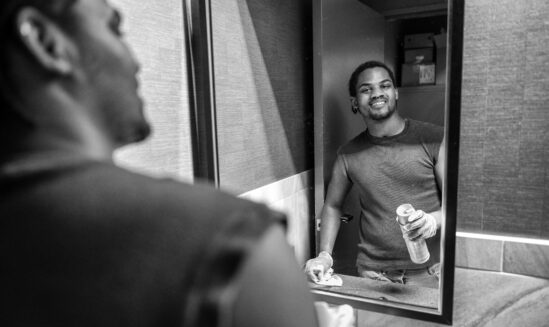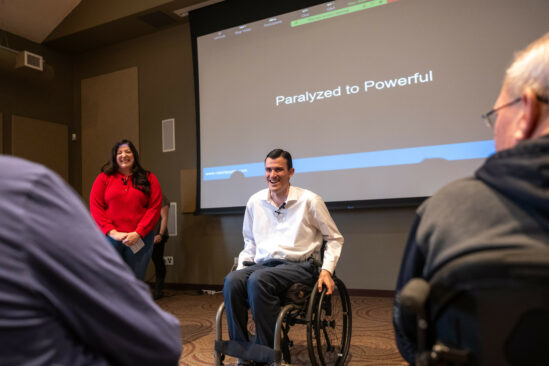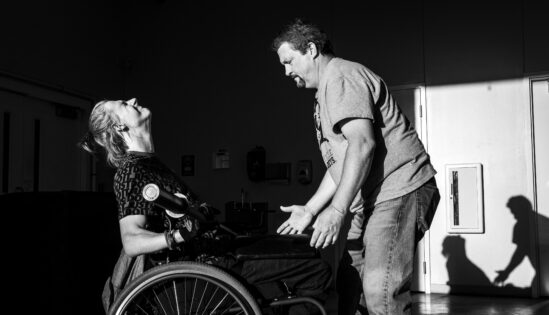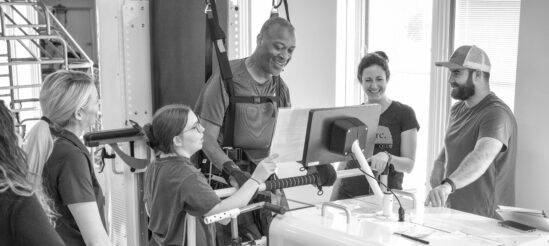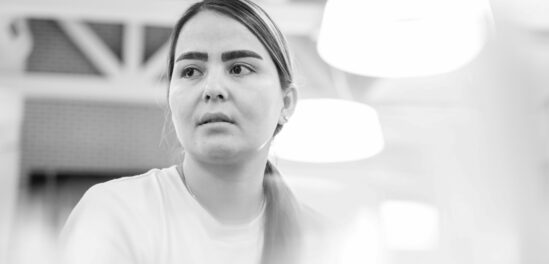“I’ve had a little bit of an unconventional life, one that I worked very hard to make a reality.” Twenty-nine-year-old Cassidy Slusher hails from Denver, Colorado. Conventional paths are not her thing. Living purposefully is.
“Over the past few years I’ve come to understand what I value—to be both independent and to have a free spirit mindset,” says Cassidy. “In a sense, there’s a dichotomy within my own life—I care about professionalism and my career while I also want to make sure I’m living life to the fullest—enjoying every bit of it.” This mindset challenged Cassidy to look at things a little differently than most.
For example, a little over a year ago, Cassidy made an unconventional decision. Given how costly renting an apartment is in Denver, when Cassidy’s lease was up she would move her belongings into storage and live out of her car. During the day, she worked a nine-to-five corporate marketing job. To supplement her income, she had a clientele for whom she regularly house and dog-sat, allowing her to have a place to stay. Dollars that would have gone to rent instead went to a savings account that would ultimately go towards purchasing a home. Non-traditional, perhaps, but effective.
Cassidy cherished the time spent with her friends. She lived a life that represented the core of who she is, her outlook on life, and what she valued most. She and a friend got their motorcycle licenses. She experimented with long-exposure photography. Her employer offered her continued growth. The summer of 2022 was set up to be a great one.
…
“I first noticed a consistent burning sensation in my foot and shin,” says Cassidy. “At that point, I was having some fatigue—which wasn’t unusual—but then one day in July 2022 I woke up with very bad joint pain. Within a couple of days the pain extended to a burning feeling everywhere in my hands and feet, then the pain was in my mouth, and by the fifth or sixth day, I was stumbling around. Around the eighth or ninth day, I couldn’t walk on my own. I went to the ER on three separate occasions, but was discharged home every time—they didn’t realize what it was. I ended up going to Kansas City, to the hospital my sister works at—the University of Kansas Medical Center. Immediately, they knew it was Guillain–Barre syndrome (GBS).”
GBS is defined as a rapid onset muscle weakness, which typically begins in the hands or feet and 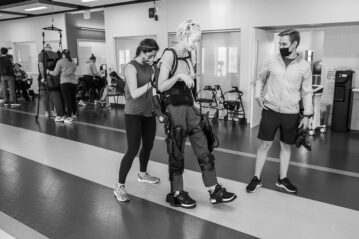 spreads to the rest of the body. Its cause is unknown but is classified as an autoimmune disorder where the body mistakenly attacks the nerves.
spreads to the rest of the body. Its cause is unknown but is classified as an autoimmune disorder where the body mistakenly attacks the nerves.
The prognosis varies for every individual who has GBS. For some, it may take months or even years to again become independent or ambulatory. In Cassidy’s mind, that line of thinking was far in the future. Her approach is to build things slowly, considering all factors. Cassidy remained at the University of Kansas Medical Center for five weeks as they waited for the symptoms to ease. She then transitioned to Kansas Health Systems’ Acute Inpatient Rehabilitation facility to start rehabilitation.
“As I started working with a case manager in Kansas, it became clear to me that QLI was the place for me to go, given both the intensive therapy I needed and their history with neurological rehabilitation.”
…
“Cassidy is very strong and independent,” says QLI physical therapist Dani Gruber. “She educates herself, knows what she wants, and advocates for those things. What motivates Cassidy is having a purpose, and having the time to think through it, understanding exactly what she wants to gain out of each clinical session.
When advancing towards any goal—repetitions within the tasks are key in service to the goal. For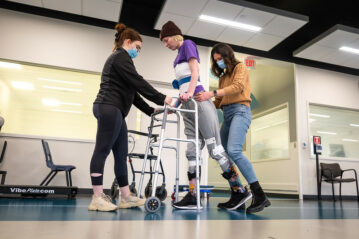 Cassidy, these repetitions were found in the physical therapy sessions she had with her therapy team. Physical therapists implemented motor learning sessions where Cassidy would practice the mechanics of gait training and stabilization with rehabilitation technology such as the Ekso exoskeleton, the EVA support walker, and the ZeroG body weight support system. Together, they found ways to synthesize these modalities with the ultimate aim of physical independence. As the months went by—this synthesis became evident in an average week of therapy for Cassidy—in one week she could have sessions in the Ekso exoskeleton, work on squats and lunges by using the ZeroG body weight support system, and have these techniques carried through to a residential setting by practicing floor transfers.
Cassidy, these repetitions were found in the physical therapy sessions she had with her therapy team. Physical therapists implemented motor learning sessions where Cassidy would practice the mechanics of gait training and stabilization with rehabilitation technology such as the Ekso exoskeleton, the EVA support walker, and the ZeroG body weight support system. Together, they found ways to synthesize these modalities with the ultimate aim of physical independence. As the months went by—this synthesis became evident in an average week of therapy for Cassidy—in one week she could have sessions in the Ekso exoskeleton, work on squats and lunges by using the ZeroG body weight support system, and have these techniques carried through to a residential setting by practicing floor transfers.
Progress, of course, does not happen overnight. Not only does it take buy-in from a client to be successful (which Cassidy has in spades) but it also takes equal measures of time and persistence. Cassidy’s mindset that she had built throughout her life meant that she had the persistence needed to not only make progress but discover what worked best for her. This characteristic melded seamlessly with the collaborative effort of her clinicians.
All of this progress toward independence paid off. “I’m nearly independent in my routines,” says Cassidy. 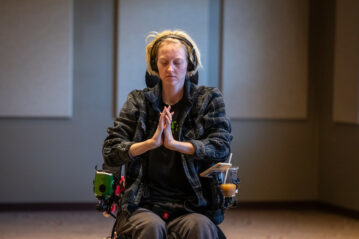 “The big physical thing ahead of me is continuing to grow independent in all of my transfers.” As she prepares to discharge back to Colorado, she looks back on the perspective she has gained since her diagnosis.
“The big physical thing ahead of me is continuing to grow independent in all of my transfers.” As she prepares to discharge back to Colorado, she looks back on the perspective she has gained since her diagnosis.
“Things just happen. It’s neither good nor bad—the universe didn’t send a force my way that’s now a looming obstacle. I’m still myself, it’s just a little different now. Even before, when I was fully ambulatory, there were so many things I couldn’t do—it’s not like I could jump over buildings or breathe underwater. We as humans are so physically limited when we consider everything that is theoretically possible. What I’m experiencing is a different version of that limitation. It is different, but not much different from where I was.
“Through this experience, I’ve learned about what I need in life. For a while now, my life has been so specific with how I’ve curated it and what I’ve been trying to build. There were many things that I thought I needed and wanted. I understand now that even with those things absent, I can still thrive in my own way.”


